Back to Art & Object
 How Art Reflects the Changing History of Medicine
How Art Reflects the Changing History of Medicine
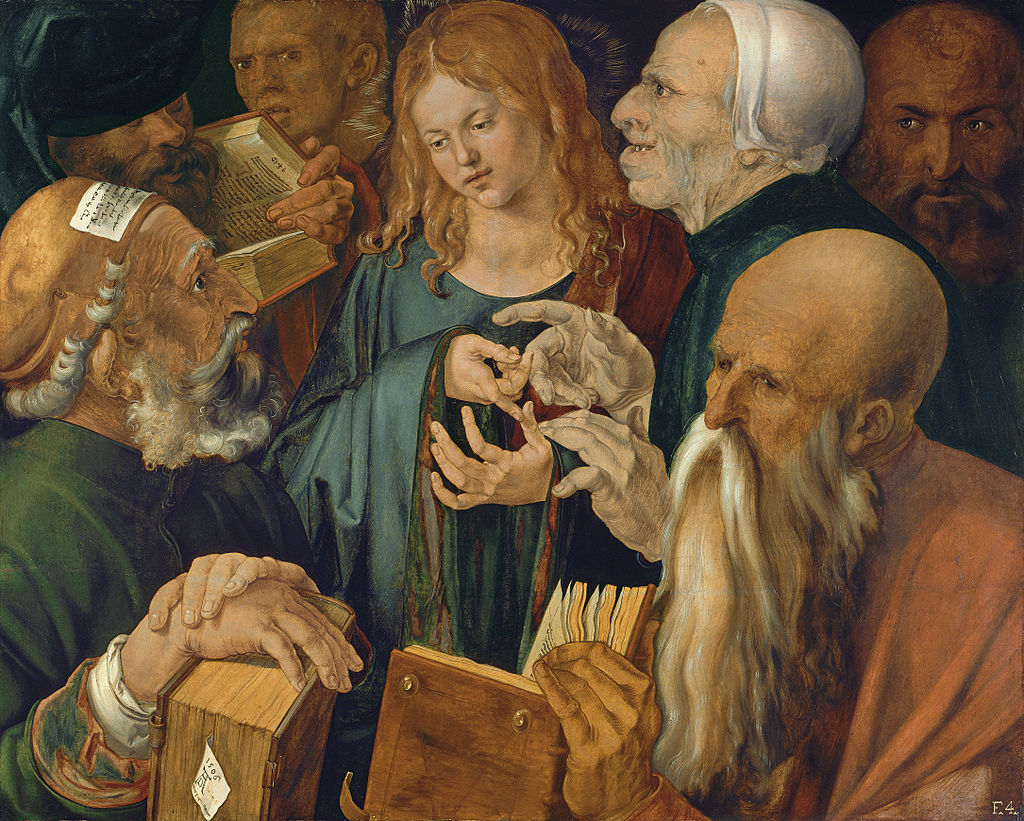
Jesus Among the Doctors
- Artist Albrecht Dürer
- Date 1506
- Materials Oil on panel
- Dimensions Height: 34 inches
German artist Albrecht Dürer was known as a master of engraving and of the self-portrait. In Jesus Among the Doctors Dürer brings together science and religion in a dynamic composition. According to an inscription on this work, “Opus Quinque Dierum”, it was completed in a mere five days while the artist was working on a major commission in Venice, The Feast of the Rosary altarpiece.
Photo Courtesy : wikimedia commons
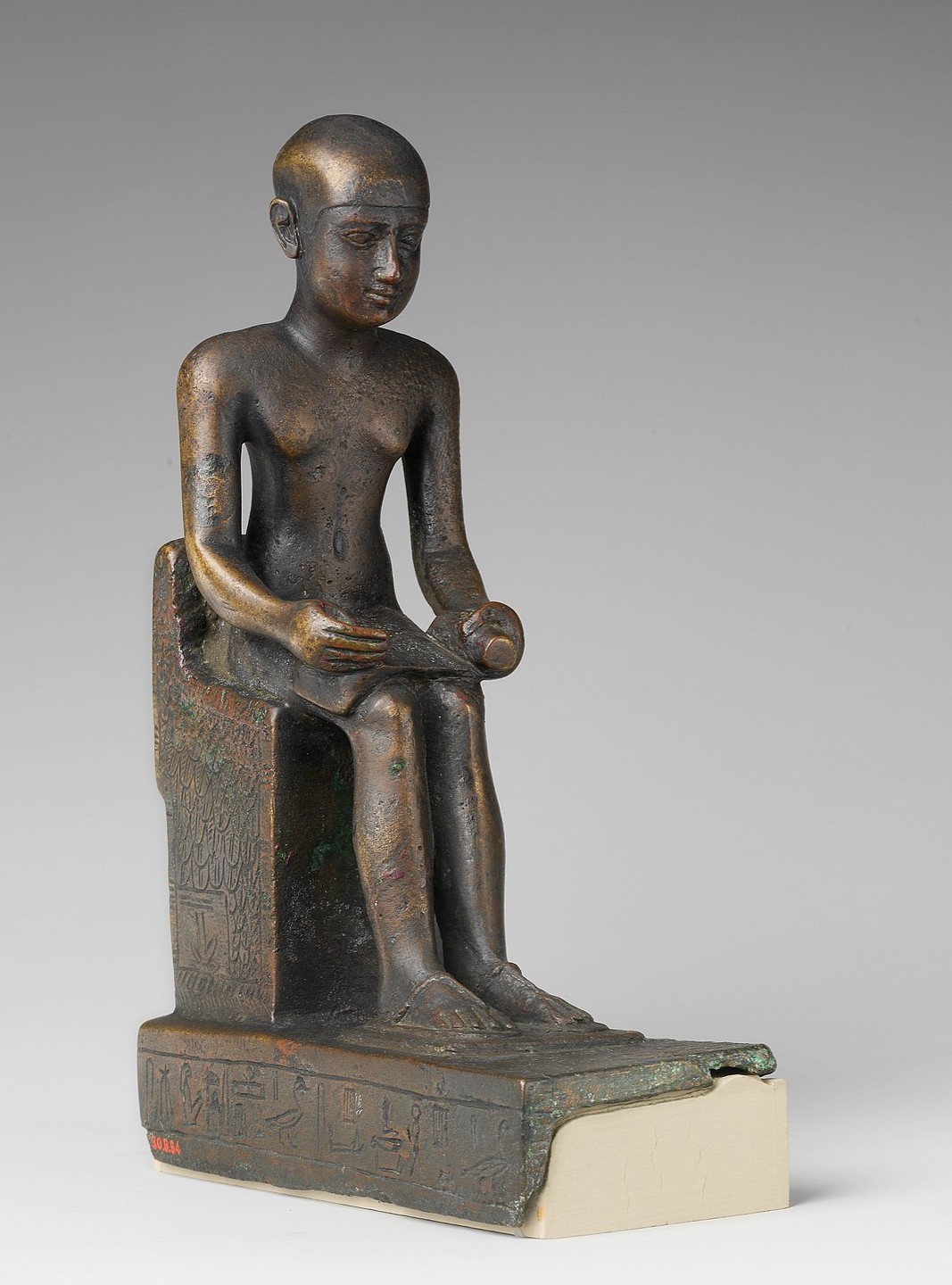
Imhotep Statuette
- Artist Egyptian
- Date 664-30 BC
- Materials Bronze
- Dimensions Height: 34 inches
This bronze statuette at the Met depicts Imhotep, a high priest and chancellor to the pharaoh Djoser, who was the first recorded Egyptian figure revered for contributing to knowledge as opposed to being a king or a conqueror. Imhotep became the center of a cult that elevated his status as a god of medicine and although the Greeks equated him with Asklepios, their own god of medicine, there is still some debate among Egyptologists whether Imhotep was ever a practicing physician.
Photo Courtesy : wikimedia commons
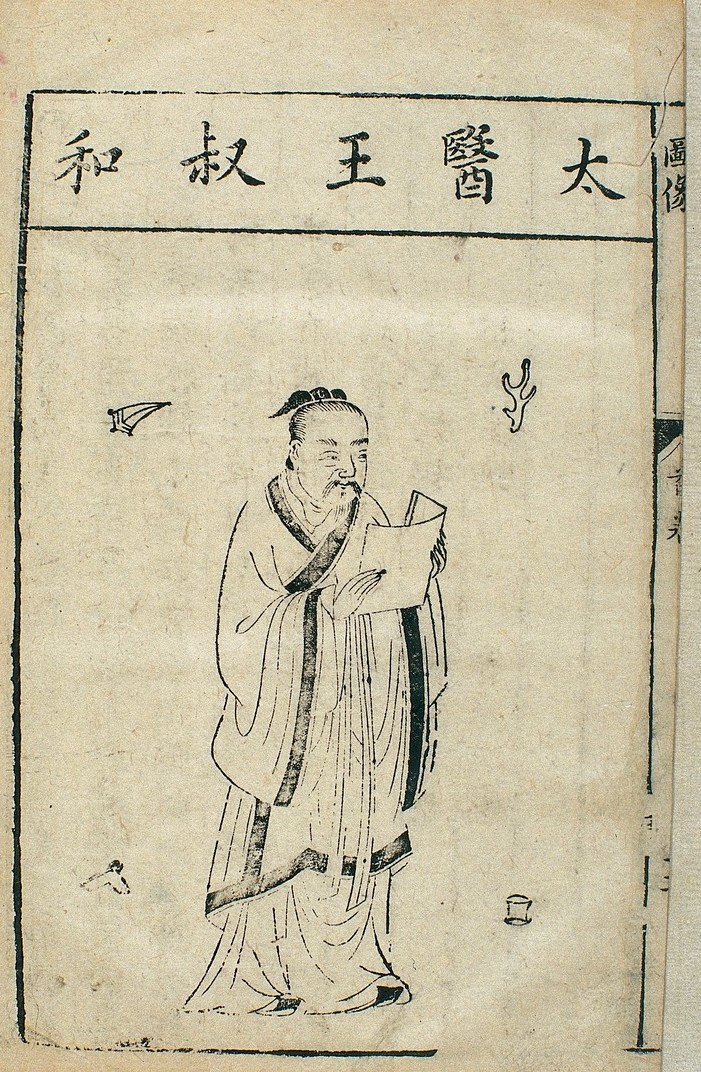
Wang Shuhe
- Artist Gan Bozong
- Date Tang Dynasty, 618-907
- Materials Woodcut print
- Dimensions Height: 34 inches
This woodcut of Wang Shuhe, a famous figure in Chinese culture and one of the founders of Chinese medicine was created by Gan Bozong an artist from the Tang Dynasty (618-907). A statement about Wang Shuhe’s identity indicates he was “A quiet man of vast learning, well-versed in the classics and in the arts of prescribing and pulse diagnosis.” The doctor was also an excellent writer. This is one of a series of woodcuts made by Gan Bozong featuring illustrious physicians in the history of Chinese medicine.
Photo Courtesy : Wellcome Collection
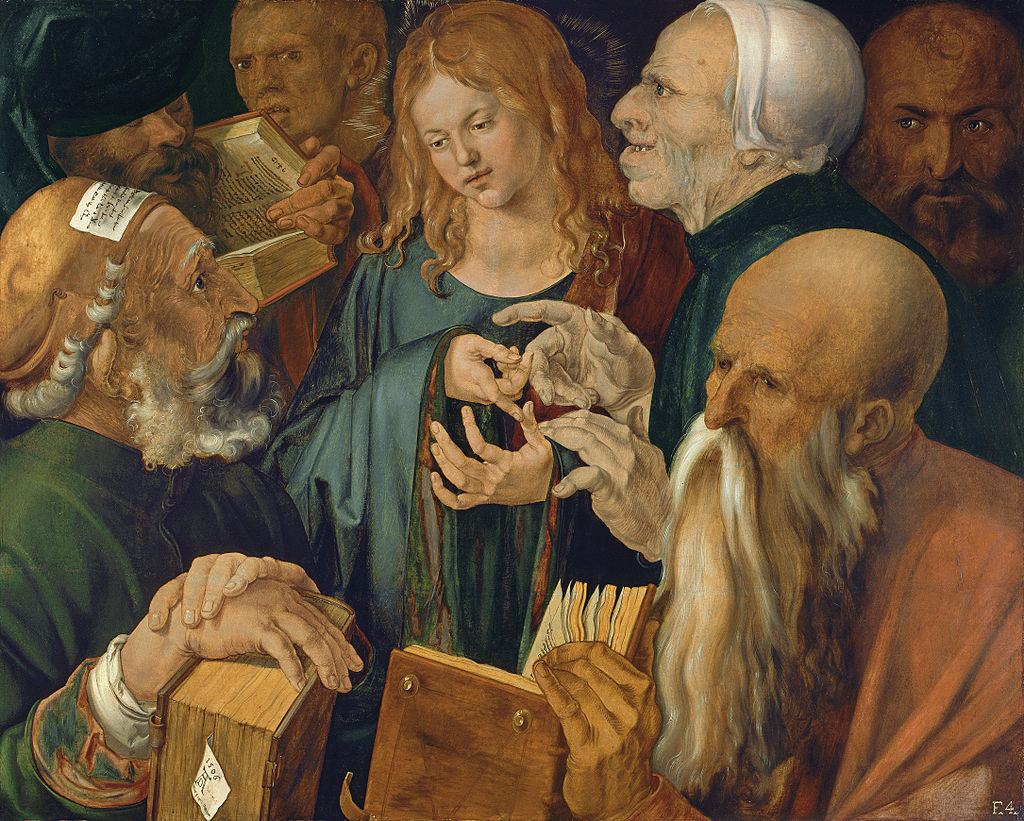
Jesus Among the Doctors
- Artist Albrecht Dürer
- Date 1506
- Materials Oil on panel
- Dimensions Height: 34 inches
German artist Albrecht Dürer was known as a master of engraving and of the self-portrait. In Jesus Among the Doctors Dürer brings together science and religion in a dynamic composition. According to an inscription on this work, “Opus Quinque Dierum”, it was completed in a mere five days while the artist was working on a major commission in Venice, The Feast of the Rosary altarpiece.
Photo Courtesy : wikimedia commons
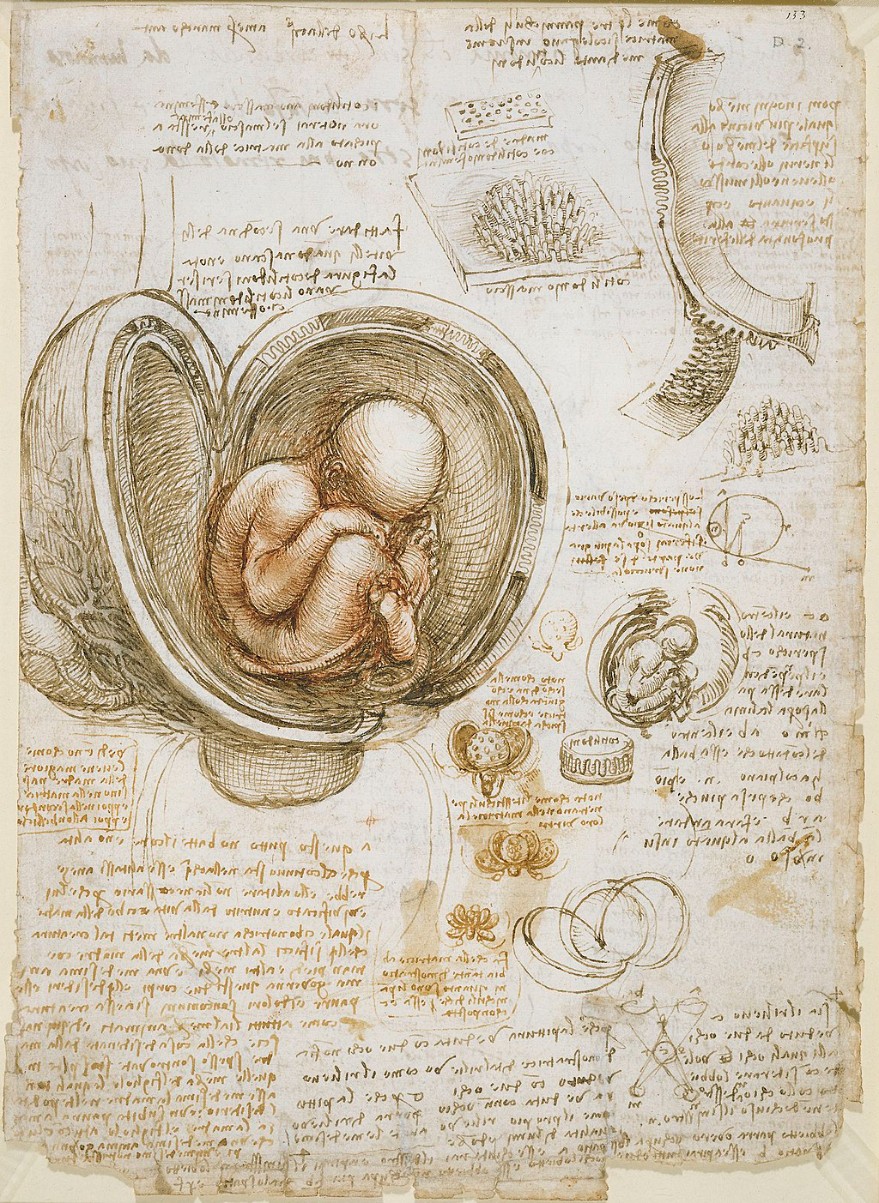
Studies of the Fetus in the Womb
- Artist Leonardo da Vinci
- Date c. 1510-13
- Materials Pen and ink
- Dimensions Height: 34 inches
No survey of art and medicine is complete without mentioning Leonardo da Vinci who some regard as the greatest artist/scientist/inventor that ever lived. Considered a genius, the quintessential “Renaissance Man,” he had no formal academic training, but his detailed anatomical studies covered the entire life cycle from birth to death and greatly contributed to the advancement of science and medical practice.
Photo Courtesy : wikimedia commons
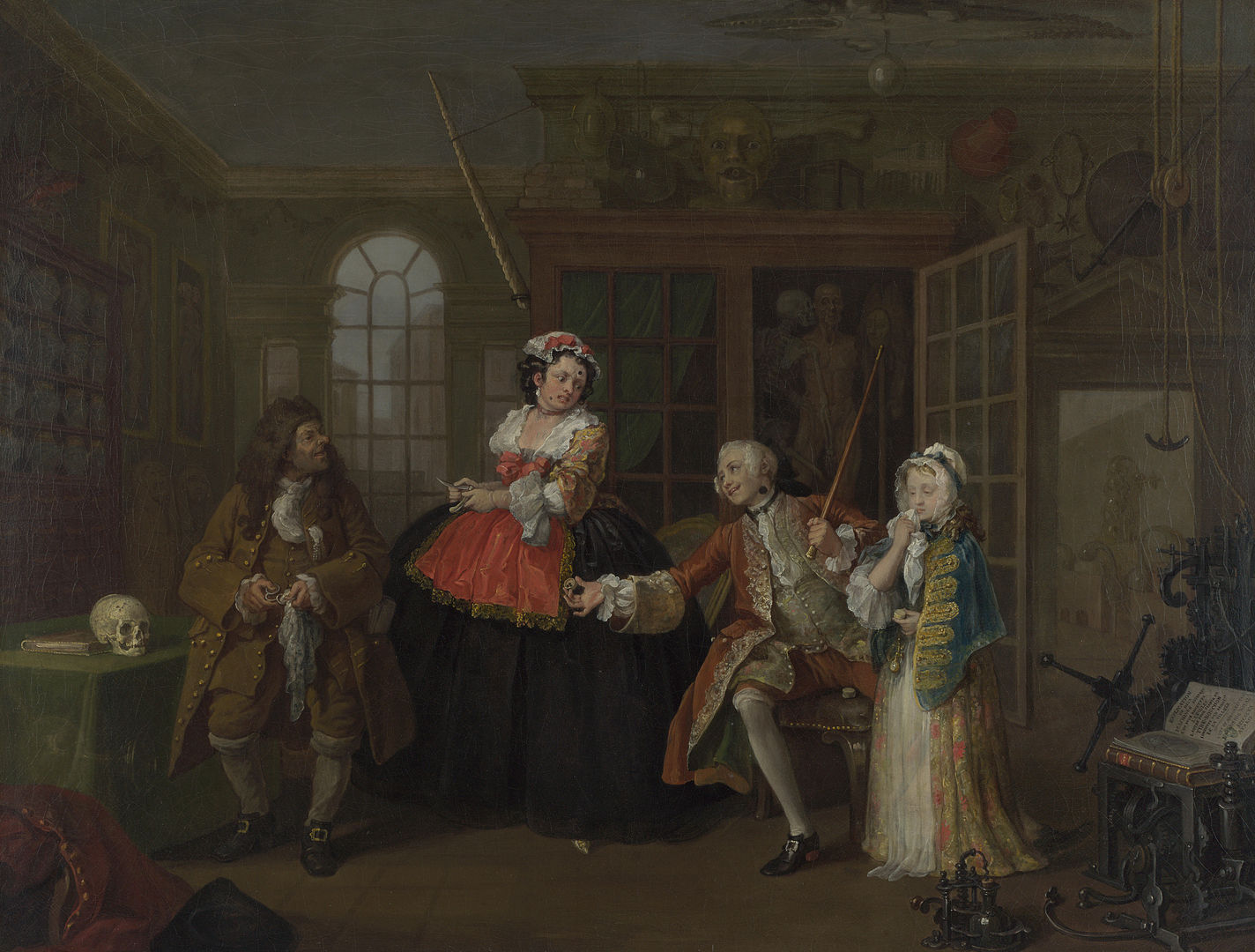
Visit with the Quack Doctor
- Artist William Hogarth
- Date c.1743-45
- Materials Oil on canvas
- Dimensions Height: 34 inches
Marriage A-la Mode is a series of six paintings condemning debauchery, adultery, and greed by the master of satire, the 18th-century artist William Hogarth. Visit to the Quack Doctor is the third in the series depicting the husband who has contracted a venereal disease, his rather pale, sickly looking wife, and a toothless, demonical “doctor.” Hogarth could not abide charlatans, and the medical profession is certainly not immune to their abuse and ability to take advantage of a gullible public.
Photo Courtesy : wikimedia commons
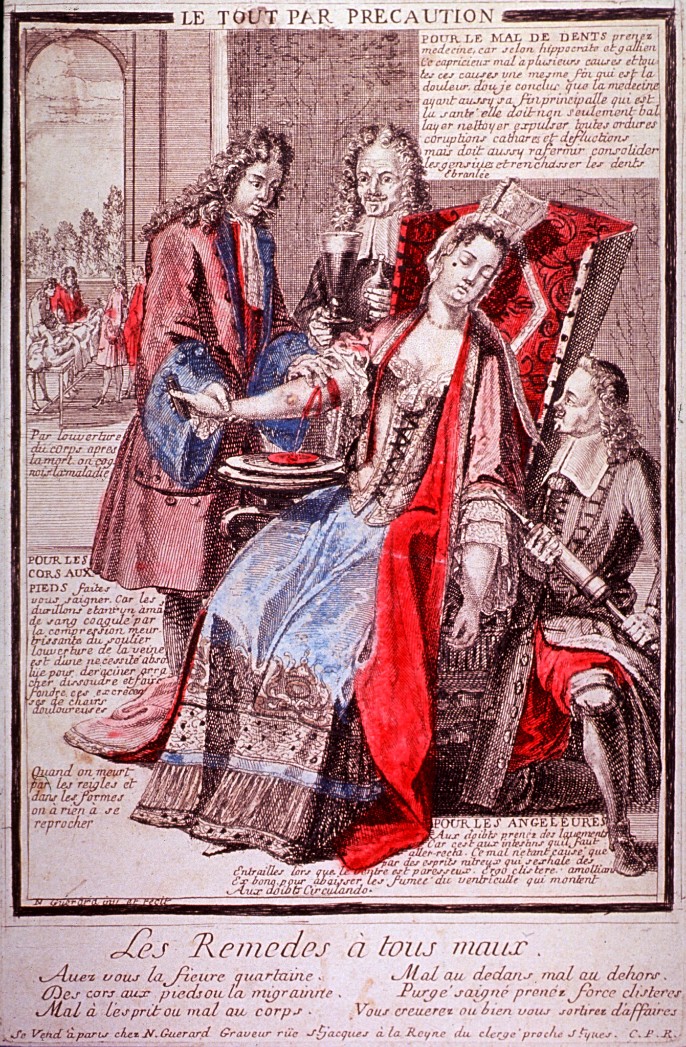
Remedies for All Evils: All as a Precaution
- Artist Nicolas Guerard the Younger
- Date c. 1660
- Materials Color engraving
- Dimensions Height: 34 inches
In a similar vein to Hogarth, this 17th-century engraving by the French artist Nicolas Guerard shows a woman surrounded by three doctors being subjected to a blood-letting treatment. This practice was once considered a cure for a variety of illnesses but has since been debunked. The artist reminds us that death is never far away by showing an autopsy being performed on the left side of the image in the background.
Photo Courtesy : US National Library of Medicine
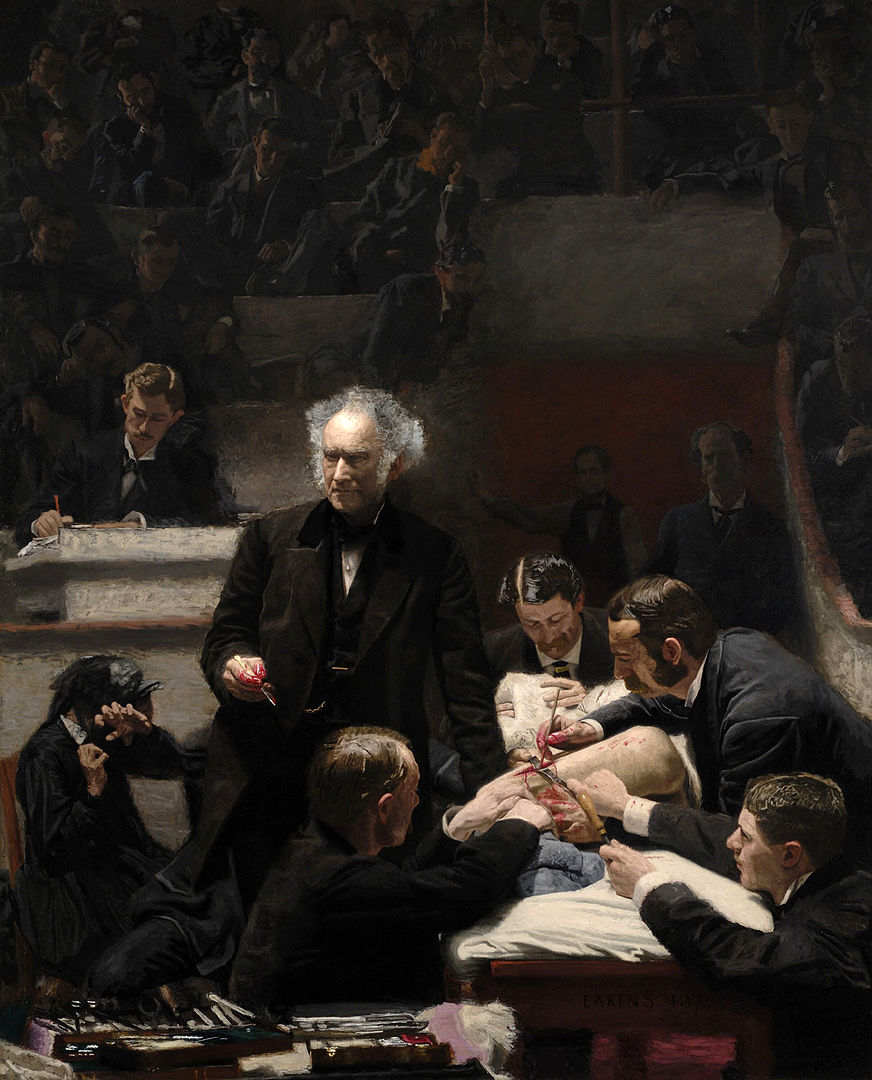
Portrait of Dr. Samuel D. Gross (The Gross Clinic)
- Artist Thomas Eakins
- Date 1875
- Materials Oil on canvas
- Dimensions Height: 34 inches
Thomas Eakins is considered one of the greatest American artists of the 19th century and his painting of the renowned Philadelphia surgeon Dr. Samuel D. Gross presiding over an operation is his most famous work. As the surgical team operates, Dr. Gross calmly addresses his students and the clinic clerk records the proceedings. Eakins spent almost an entire year on the painting to honor this highly regarded practitioner of modern medicine.
Photo Courtesy : US National Library of Medicine
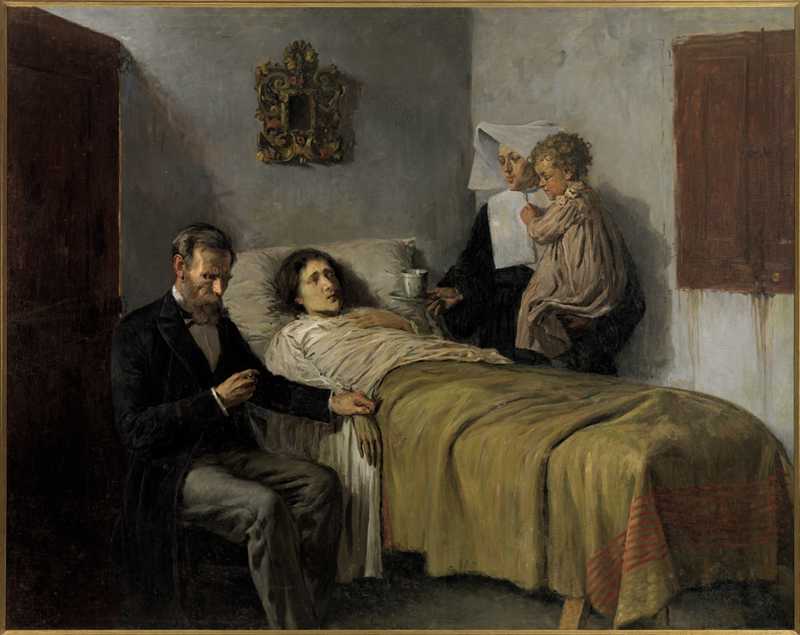
Science and Charity
- Artist Pablo Picasso
- Date 1897
- Materials Oil on canvas
- Dimensions Height: 34 inches
It is astounding that Picasso was only fifteen-years-old when he painted this image of a doctor and Nun tending a sick patient. He was mentored by his artist/father José Ruiz Blasco who encouraged the young Picasso to take on this challenging subject, in part designed to win his son’s acceptance to the National Exhibition in Barcelona, Spain and thereby ensuring his future career as an artist.
Photo Courtesy : US National Library of Medicine
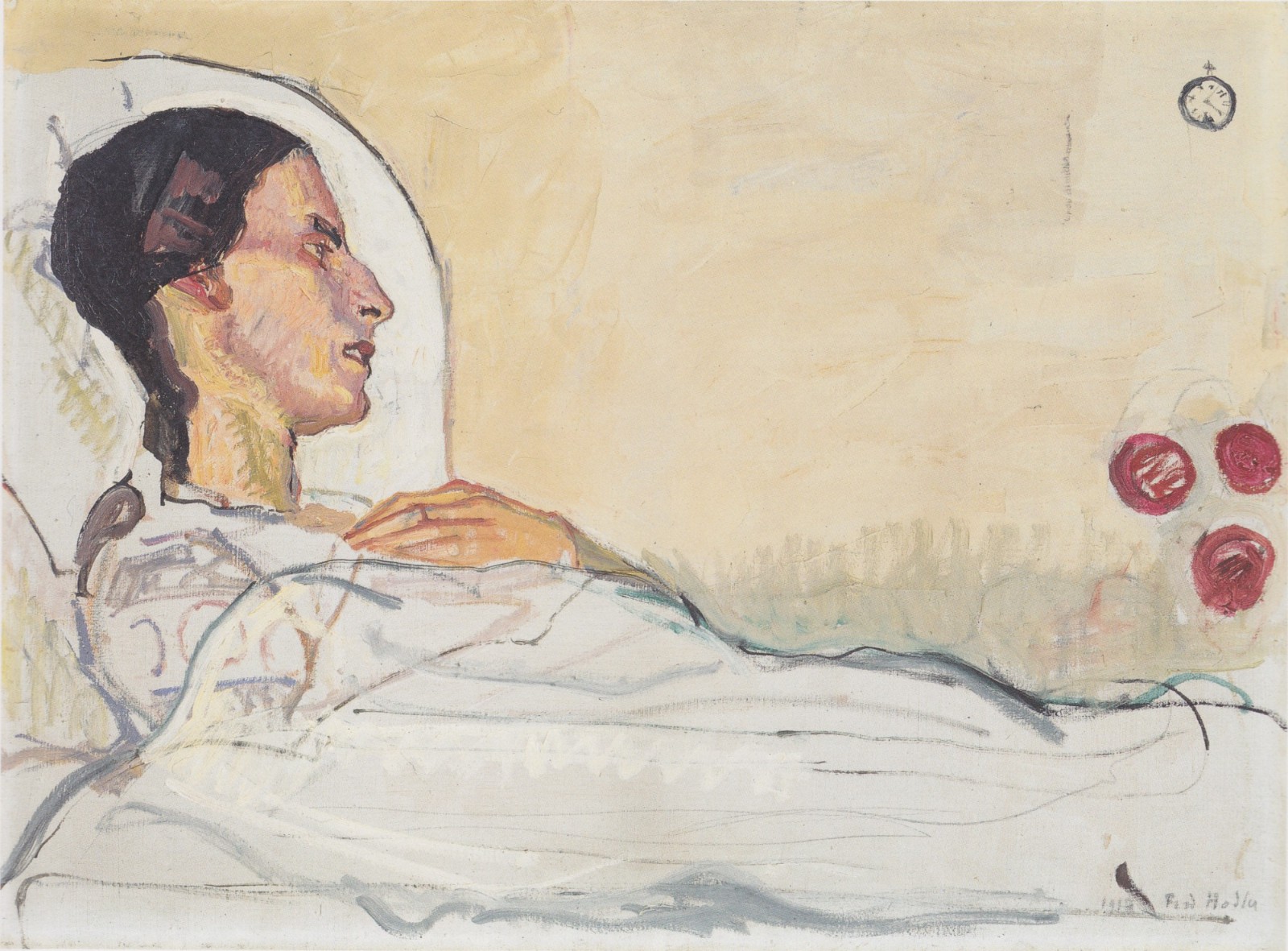
Valentine Godé-Darel on Her Sickbed
- Artist Ferdinand Hodler
- Date 1914
- Materials Oil on canvas
- Dimensions Height: 34 inches
The family of well-known Swiss painter Ferdinand Hodler was devastated by tuberculosis, but he survived sickness and poverty to study science early in his career. He also investigated Dürer’s writings about human proportions after he went on to become an artist. Perhaps Hodler’s childhood confrontation with disease provided some motivation for the poignant series of paintings documenting the decline of his mistress, Valentine Godé-Darel, following her diagnoses of cancer in 1913. She died in January 1915.
Photo Courtesy : wikimedia commons
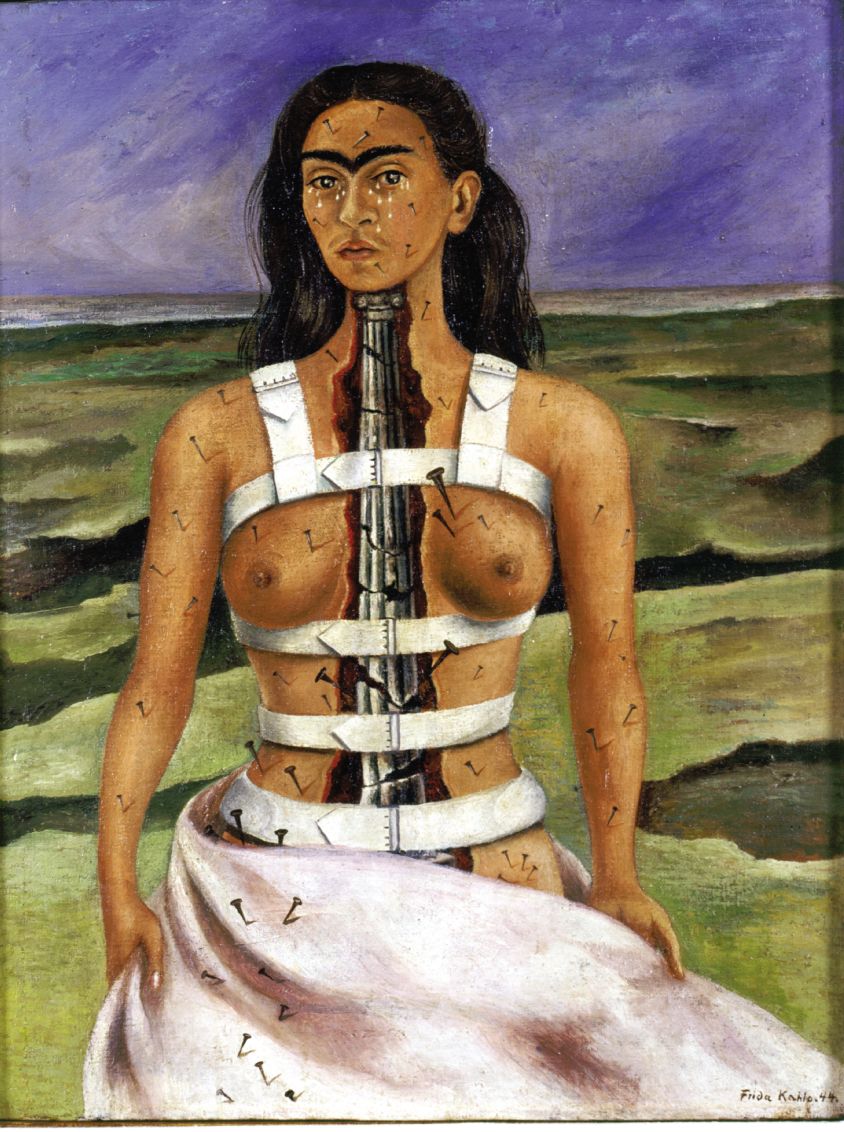
Broken Column
- Artist Frida Kahlo
- Date 1944
- Materials Oil on masonite
- Dimensions Height: 34 inches
Sickness and suffering physical pain is a major subject matter throughout the life and work of the beloved Mexican painter Frida Kahlo. Surviving polio in her childhood left her with a deformed right leg and a horrific bus accident at the age of 18 nearly broke every bone in her body and crushed her spine. Before the accident Kahlo had been interested in studying medicine but turned to art, painting mainly self-portraits as a vehicle to process her pain and anguish.
Photo Courtesy : wikimedia commons
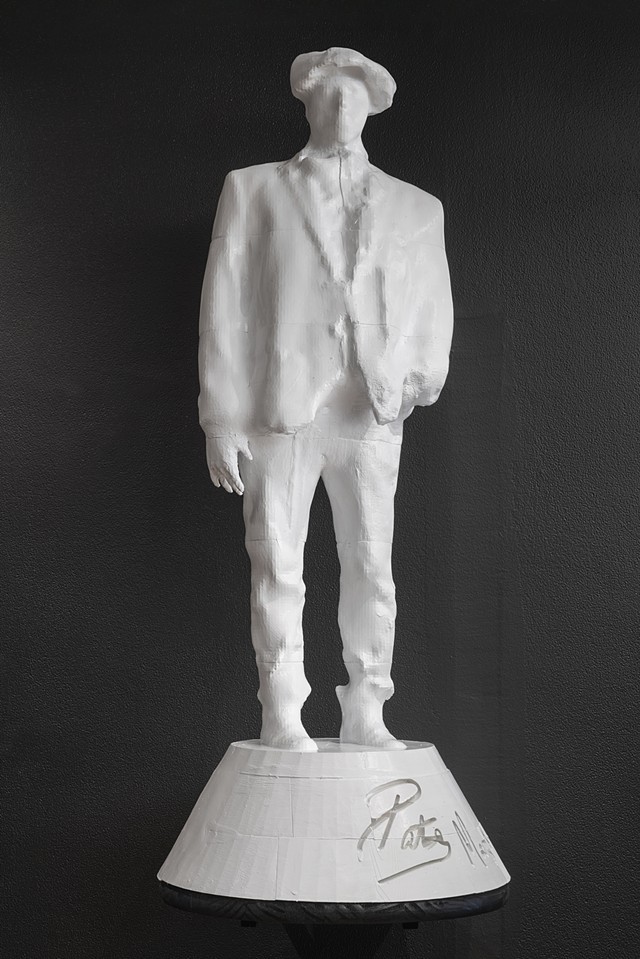
The Cure
- Artist Megan Euker
- Date 2020
- Materials Mixed media installation
- Dimensions Height: 34 inches
The Cure, an exhibition at The International Museum of Surgical Science, is the culmination of Chicago-based artist Megan Euker’s three-year investigation of “orphan diseases,” those conditions affecting small patient populations who have been ‘orphaned’ by the pharmaceutical industry as they pursue more lucrative opportunities. Using 3-D printed and cast metal sculptures, timelines, and data visualization, Euker’s powerful work represents how contemporary artists can transcend the boundaries between art and science to communicate complex ideas and promote positive systemic change.
Photo Courtesy : courtesy of the artist

Jesus Among the Doctors
German artist Albrecht Dürer was known as a master of engraving and of the self-portrait. In Jesus Among the Doctors Dürer brings together science and religion in a dynamic composition. According to an inscription on this work, “Opus Quinque Dierum”, it was completed in a mere five days while the artist was working on a major commission in Venice, The Feast of the Rosary altarpiece.
Photo Courtsey of wikimedia commons
Imhotep Statuette
This bronze statuette at the Met depicts Imhotep, a high priest and chancellor to the pharaoh Djoser, who was the first recorded Egyptian figure revered for contributing to knowledge as opposed to being a king or a conqueror. Imhotep became the center of a cult that elevated his status as a god of medicine and although the Greeks equated him with Asklepios, their own god of medicine, there is still some debate among Egyptologists whether Imhotep was ever a practicing physician.
Photo Courtsey of wikimedia commons
Wang Shuhe
This woodcut of Wang Shuhe, a famous figure in Chinese culture and one of the founders of Chinese medicine was created by Gan Bozong an artist from the Tang Dynasty (618-907). A statement about Wang Shuhe’s identity indicates he was “A quiet man of vast learning, well-versed in the classics and in the arts of prescribing and pulse diagnosis.” The doctor was also an excellent writer. This is one of a series of woodcuts made by Gan Bozong featuring illustrious physicians in the history of Chinese medicine.
Photo Courtsey of Wellcome Collection
Jesus Among the Doctors
German artist Albrecht Dürer was known as a master of engraving and of the self-portrait. In Jesus Among the Doctors Dürer brings together science and religion in a dynamic composition. According to an inscription on this work, “Opus Quinque Dierum”, it was completed in a mere five days while the artist was working on a major commission in Venice, The Feast of the Rosary altarpiece.
Photo Courtsey of wikimedia commons
Studies of the Fetus in the Womb
No survey of art and medicine is complete without mentioning Leonardo da Vinci who some regard as the greatest artist/scientist/inventor that ever lived. Considered a genius, the quintessential “Renaissance Man,” he had no formal academic training, but his detailed anatomical studies covered the entire life cycle from birth to death and greatly contributed to the advancement of science and medical practice.
Photo Courtsey of wikimedia commons
Visit with the Quack Doctor
Marriage A-la Mode is a series of six paintings condemning debauchery, adultery, and greed by the master of satire, the 18th-century artist William Hogarth. Visit to the Quack Doctor is the third in the series depicting the husband who has contracted a venereal disease, his rather pale, sickly looking wife, and a toothless, demonical “doctor.” Hogarth could not abide charlatans, and the medical profession is certainly not immune to their abuse and ability to take advantage of a gullible public.
Photo Courtsey of wikimedia commons
Remedies for All Evils: All as a Precaution
- Artist Nicolas Guerard the Younger
- Date c. 1660
- Materials Color engraving
- Dimensions Height: 34 inches
In a similar vein to Hogarth, this 17th-century engraving by the French artist Nicolas Guerard shows a woman surrounded by three doctors being subjected to a blood-letting treatment. This practice was once considered a cure for a variety of illnesses but has since been debunked. The artist reminds us that death is never far away by showing an autopsy being performed on the left side of the image in the background.
Photo Courtsey of US National Library of Medicine
Portrait of Dr. Samuel D. Gross (The Gross Clinic)
Thomas Eakins is considered one of the greatest American artists of the 19th century and his painting of the renowned Philadelphia surgeon Dr. Samuel D. Gross presiding over an operation is his most famous work. As the surgical team operates, Dr. Gross calmly addresses his students and the clinic clerk records the proceedings. Eakins spent almost an entire year on the painting to honor this highly regarded practitioner of modern medicine.
Photo Courtsey of US National Library of Medicine
Science and Charity
It is astounding that Picasso was only fifteen-years-old when he painted this image of a doctor and Nun tending a sick patient. He was mentored by his artist/father José Ruiz Blasco who encouraged the young Picasso to take on this challenging subject, in part designed to win his son’s acceptance to the National Exhibition in Barcelona, Spain and thereby ensuring his future career as an artist.
Photo Courtsey of US National Library of Medicine
Valentine Godé-Darel on Her Sickbed
The family of well-known Swiss painter Ferdinand Hodler was devastated by tuberculosis, but he survived sickness and poverty to study science early in his career. He also investigated Dürer’s writings about human proportions after he went on to become an artist. Perhaps Hodler’s childhood confrontation with disease provided some motivation for the poignant series of paintings documenting the decline of his mistress, Valentine Godé-Darel, following her diagnoses of cancer in 1913. She died in January 1915.
Photo Courtsey of wikimedia commons
Broken Column
Sickness and suffering physical pain is a major subject matter throughout the life and work of the beloved Mexican painter Frida Kahlo. Surviving polio in her childhood left her with a deformed right leg and a horrific bus accident at the age of 18 nearly broke every bone in her body and crushed her spine. Before the accident Kahlo had been interested in studying medicine but turned to art, painting mainly self-portraits as a vehicle to process her pain and anguish.
Photo Courtsey of wikimedia commons
The Cure
The Cure, an exhibition at The International Museum of Surgical Science, is the culmination of Chicago-based artist Megan Euker’s three-year investigation of “orphan diseases,” those conditions affecting small patient populations who have been ‘orphaned’ by the pharmaceutical industry as they pursue more lucrative opportunities. Using 3-D printed and cast metal sculptures, timelines, and data visualization, Euker’s powerful work represents how contemporary artists can transcend the boundaries between art and science to communicate complex ideas and promote positive systemic change.
Photo Courtsey of courtesy of the artist